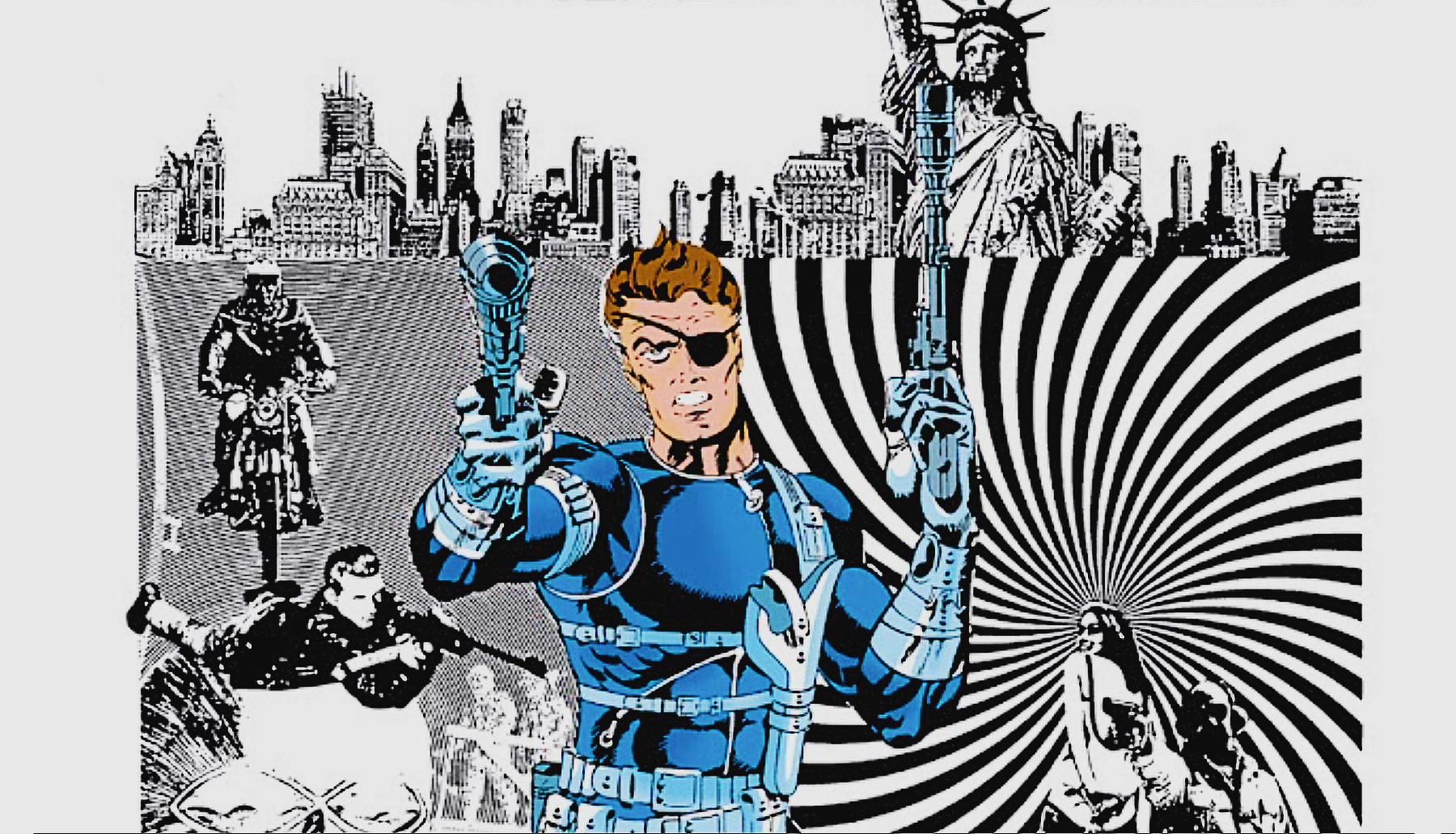In late 1965 — almost sixty years ago to the month — Marvel Comics reshaped the superhero landscape with the introduction of the Supreme Headquarters, International Espionage and Law Enforcement Division (S.H.I.E.L.D.). From its inception, S.H.I.E.L.D. was the organizational equivalent of a superhero. Like the heroes it works alongside, it has revolutionized law enforcement, expanded the frontiers of international espionage, and driven innovation in counter-terrorism. It has also emerged as the premier international agency for handling alien and paranormal affairs. Like any governmental “security” agency, whether you are a hero or not, S.H.I.E.L.D. is not an entity you want to cross. Crossing them comes with consequences, sometimes before you even realize it.
But even more impressive than being a global force for good, S.H.I.E.L.D. has grown into a major force, and in the process, has significantly changed in the Marvel Universe. With its heroic mission, access to cutting-edge technology, and elite special teams, S.H.I.E.L.D. now rivals Marvel’s top superhero groups in power, influence, and success.
While few events in the Marvel Universe now escape S.H.I.E.L.D.’s notice, it wasn’t always that way. Created by Stan Lee and Jack Kirby and first introduced in Strange Tales #135, S.H.I.E.L.D. was originally conceived as a secret international spy agency. It was formed by a covert alliance of government officials, academics, and corporate leaders from around the world, united in their mission to combat HYDRA—a rival global organization with far more sinister and criminal aims.
In those early days, S.H.I.E.L.D.’s connection to superheroes was limited to instances where HYDRA was a factor in a particular hero or villain’s actions or activities. As Stan Lee mentioned in Son of Origins of Marvel Comics, “as time went by, we’d use the Hordes of Hydra as the baddies in different series and different magazines.” This suggests that while initially S.H.I.E.L.D. had a relatively narrow focus, its mission was left open-ended in regards to its potential involvement in superhero affairs.
S.H.I.E.L.D.’s primary impact on the Marvel Universe at the time was to introduce heroes, as Lee describes in Son of Origins, who didn’t rely on “multicolored costumes or atomic-induced powers” to succeed. Instead, they were armed only with their wits. In other words, S.H.I.E.L.D., as an organization, and its leader, Nick Fury, helped popularize the “ordinary” hero characters like Hawkeye, Black Widow, and the Punisher. These individuals, devoid of superhuman abilities, relied on intelligence, strategy, and sheer determination to protect the world.
In a world where superpowered beings are common, it wasn’t long before HYDRA — an organization that shares the ambitions of more than a few supervillains — was revealed to have connections to them. In Strange Tales #156, Fury learns that HYDRA’s leader is Baron Werner von Strucker, his arch-enemy from World War II and a threat who truly embodies the essence of a supervillain. As stated by Red Skull in Captain America and The Falcon #148, HYDRA served as a “valuable instrument” in his scheme to initiate the Fourth Reich..
It also didn’t take long for S.H.I.E.L.D. to recognize that, with its resources and expertise, it could serve as a valuable ally to superheroes, just as superheroes could bolster its mission to protect the world. In Strange Tales #160, for example, Fury teams up with his old friend, Captain America, to thwart an army of Super-Invaders bent on conquering the United States.
Needless to say, S.H.I.E.L.D.’s role quickly expanded to include overseeing superpowered threats to global security, particularly those involved in terrorism, transnational crime, international espionage, and alien relations. Unlike traditional superhero teams, however, S.H.I.E.L.D. operates as a hybrid law enforcement and intelligence agency within the superhero/villain landscape. In doing so, it transformed the Marvel Universe from a straightforward superhero-based universe into one enriched by political intrigue, espionage, and high-stakes global conflicts.
However, S.H.I.E.L.D.’s most consequential impact on the Marvel Universe has been its emergence as a central pillar of the superhero community. On one hand, it provides a hub that links various superheroes and superhero teams to itself, to governments, and to one another. The benefit of this is that it fosters a community-wide network of forces focused on protecting the world from threats they may not normally be able to stop individually. Perhaps the best example of this occurred during Marvel Comics’ “Civil War” event, where S.H.I.E.L.D. played a central role in helping to lessen the divide between the two factions of superheroes.
The central role that S.H.I.E.L.D. eventually came to play in superhero life serves as a kind of institutional memory for the Marvel Universe. While individual heroes may come and go, S.H.I.E.L.D. remains “chock full” of knowledge about heroes, villains, and the events that draw them together. In many ways, it provided a structural backbone for the Marvel Universe, enabling more complex and interconnected storytelling while introducing new genres and iconic characters that have become essential to the mythos. Without S.H.I.E.L.D., Marvel might never have developed the richly interconnected universe we know today.
In late 1965 — almost sixty years ago to the month — Marvel Comics reshaped the superhero landscape with the introduction of the Supreme Headquarters, International Espionage and Law Enforcement Division (S.H.I.E.L.D.). From its inception, S.H.I.E.L.D. was the organizational equivalent of a superhero. Like the heroes it works alongside, it has revolutionized law enforcement, expanded Read More

